Wheel of the Year and Sabbats
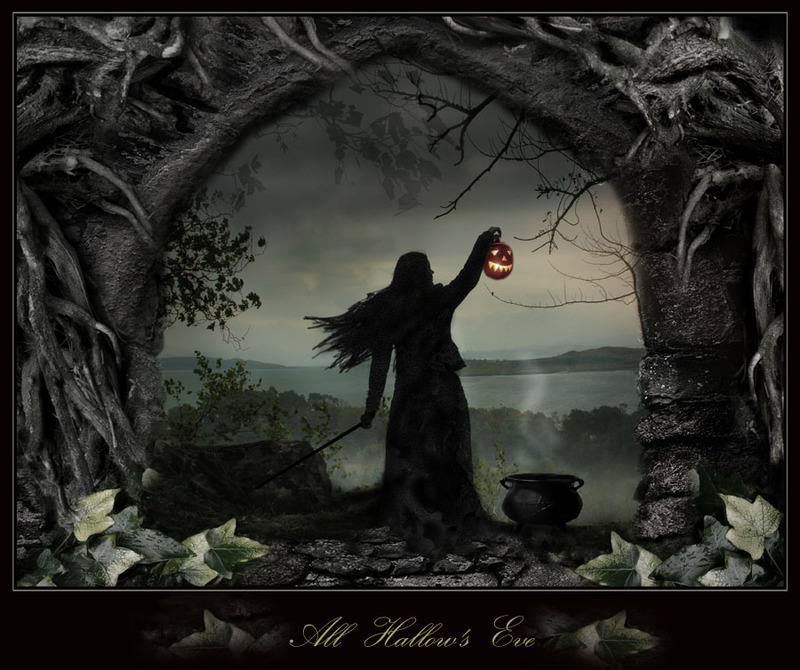
Mother Earth is alive and sentient, both matter
and consciousness. She holds out her heart to us, inviting us to deep
partnership. We are of the Earth, not separate from her. Her rhythms
are our rhythms. When we live without conscious connection to the Earth, we create
stress and disharmony, for ourselves and for all life on this planet. Tuning to her
rhythms restores harmony and teaches us to embrace the ever-turning cycle of creation and
destruction.
One of the most accessible ways to engage this
cycle is by aligning with the Wheel of the Year, the annual cycle of changing seasons.
By observing the 8 sacred holidays or festivals which mark the Wheel of the Year, we
can begin to tune deeply to this foundational cycle and learn to work with rather
than against the natural currents of life on Mother Earth.
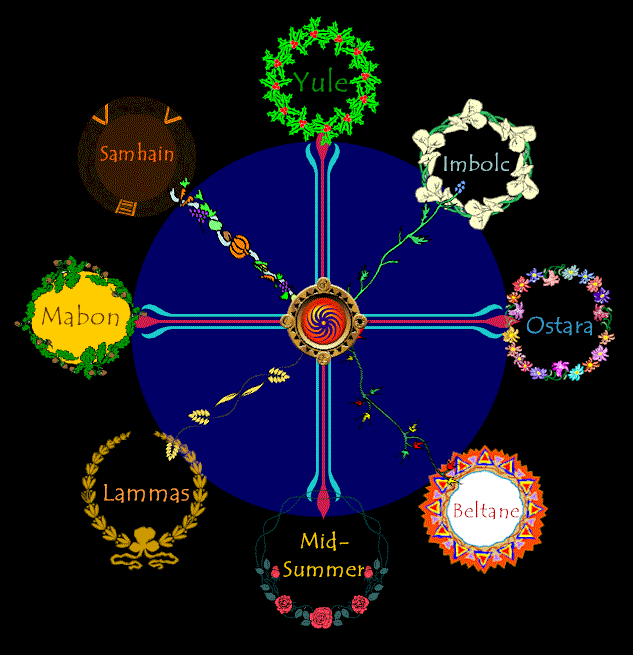
Yule (Winter Solstice): (re)birth
Imbolc (Candlemass): quickening
Ostara (Spring Equinox): emergence
Beltane (May Day): growth
Midsummer (Summer Solstice): fruition
Lughnasadh (Lammas): releasing
Mabon (Autumnal Equinox): harvest
Samhain (Halloween): death
Honoring the Wheel of the Year teaches us the dance of creation, which is found again and
again in Nature and in our lives ...
in the waxing and waning of the moon
in the rising and setting of the sun
in the inhalation and exhalation of each breath
in the beginning and ending of any endeavor
in the journey from birth to death to rebirth
When we celebrate these holidays, we join in partnership with the Earth, lending our energies to the turning of the Wheel to restore and perserve harmony and balance.
Below is an introduction to the 8 holidays. (You can click on a holiday on the image above to read about that holiday.) It is my hope that this info will provide a useful resource for tuning to these powerful Earth rhythms. Through personal observance & attunement to the Earth's rhythms you will come to your own relationship and understanding of this sacred cycle.Note: These sacred days have different names in cultures throughout the world. I have used the names and dates that have resonance for me in the Northern Hemisphere where I live. I encourage you to explore other sources & traditions regarding these sacred earth cycles and celebrations.
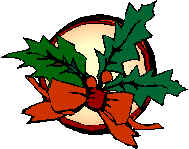
Yule (Winter Solstice)
approximately Dec. 21
Theme: First day of Winter; Rebirth; Stillness
Type: Solstice/Solar Holiday; longest night of the Year
Yule marks the
longest night of the year -- the triumph of the dark half of the year. Night and darkness have reached their apex and the
Wheel turns to restore balance. The dawn
heralds the return of the sun, bringer of light, warmth, and growth. In the days following Yule, the sun’s power
grows steadily, encroaching upon the night, pushing back the darkness.
The darkness of
this longest night holds many lessons. One of
the most powerful is the awareness that hope and light spring forth from deepest darkness.
Here, indeed, is the message “that the darkest hour comes just before the dawn”. As we wait quietly in the darkness, we honor the
stillness and the mystery of the night, and light candles or a Yule log to summon the
sun’s return. In the summoning of the
sun, we work in partnership with Nature to preserve balance. Similarly, when faced with difficult challenges in
our lives, we are partners with the Universe in manifesting hope out of despair.
The Yule tree
(recognized in modern times as the “Christmas tree”) is an ancient symbol of
life, fertility and vitality. Even in the
dead of Winter, the Yule tree is evergreen ... a reminder of the life-force of Nature. Trees are brought into the house and decked with
lights to celebrate Life and the returning of light after the darkest night.
Yule is also a
celebration of dawning potentiality. As
darkness gives way to light, the Earth lies sleeping.
To us, the Earth appears dead, dormant, but deep within her soil lies the
slumbering seed awaiting the power of the newborn sun to activate its growth. At Yule, we look within ourselves for the sleeping
seeds, and identify the situations, blessings, activities we would like to germinate and
grow in the coming year. We honor the need
for the regenerative stillness, the rest before the energetic growth of springtime. Yule is a time of transformation and rebirth. Rituals and personal healing work centered around
rebirthing are customary at this time.
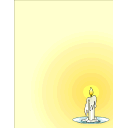
Imbolc (Candlemas)
February 1 (beginning at sundown)
Theme: Quickening, Purification; Preparation; Initiation
Type: Seasonal Holiday ~ 1st Spring Festival
Imbolc is a time of quickening. The Earth begins to stir from her long winter slumber. We sense the rising of sap in the trees, the awakening of seeds deep in the soil and the promise of the coming Spring. The seeds of personal growth, which slept within us at Yule, begin to germinate.
This holiday is a traditional time for initiations and dedicating oneself to new levels of spiritual exploration & commitment. Initiations and dedications are transformational ceremonies, which quicken new growth and invite our spirit allies to support us in in the next phase of our evolutionary journey.
Imbolc is a sacred
feast of the great Celtic Goddess Brighid. In honor of the
growing light (and of the Brighid’s perpetual flame) it is customary to burn candles
to celebrate this feast. This is a
traditional time for candlemaking; an ideal time to make &/or bless candles to be used
for sacred work throughout the year.

Ostara (Spring Equinox)
approximately March 21st
Theme: First day of Spring; Emergence; Fertility;
Balance
Type: Equinox/Solar Holiday; balance of night
& day
Ostara marks the
first day of Spring. It is a celebration of
the awakening of the Earth. All around us,
the Earth reveals her vitality ... in the soft haze of first greening, in the swelling of
buds, in the song of the robin. The seeds
within the soil have sprouted and are pushing out into the sunlight. Likewise, within us it is time for the seeds we
have nurtured since Yule to come into the light and begin to flourish. It is a time of new beginnings, the freshness
of dawn. The Earth is young again and so are
we. In the Greek myth, Persephone returns
from the Underworld to be welcomed in joy by her mother Demeter, who decks the world in
Springtime as a celebration. Now is an time
for planting or for decking your home or altar with
flowers. Many people bless the seeds for
their gardens on this day.
Traditionally,
bonfires were lit on this night and cattle were driven between the fires to purify them
and promote fertility. People leaped over the
flames for fertility and good luck.
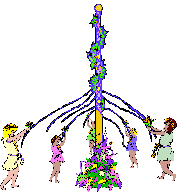 Beltane (May Day)
Beltane (May Day)April 30 (beginning at sundown)
Theme: Growth; Fertility; Passion; Creativity
Type: Seasonal Holiday ~ Final Spring Festival
Beltane is the last of three Spring festivals, a
celebration of Spring in its fullest expression. At this time, the Earth pulses with
the energies of growth and vitality. Fertility and life are all around us.
Fertility rites
such as leaping the fire and dancing the maypole (an ancient fertility symbol with the
pole as phallus and the woven ribbons representing the embrace of the vulva) are still
performed to honor this holiday. In ancient times,
lovers found each other by the glow of the bonfires and made love on the hillsides. Through these rites the passion of the Earth
is made manifest and the fertility of the Earth is stimulated.
Irrepressibly, the creative imperative bursts forth into new forms and expression. We can ride Earth's passionate wave, tapping into this powerful surge of creative energy.Joy, celebration and creativity are the hallmarks of Beltane.It is not a time for deep contemplation or meditation, but rather a time to be immediately and passionately present in the moment as we dance with the energy and rhythms of the Earth, and celebrate life and growth in all its forms -- within and without. At this time of year, we can energize projects and new life directions and honor the growing fullness of our lives.
Beltane Reflection: Spring Celebrations ~ Beltane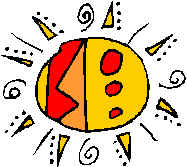
Midsummer
(Summer Solstice)
approximately June 21st
Theme: First day of Summer; Fruition; the Sun's Power Type: Solstice/Solar Holiday; longest day of the Year
Midsummer is the counter-point to Yule on the Wheel of the Year. It is the longest day -- the triumph of the light
half of the Year. When the sun has reaches
its peak, the Wheel turns to restore balance. In
the days that follow, the nights will grow longer and longer, the sun’s power slowly
waning. Traditionally, the ancient Celts set
wheels on fire (to symbolize the sun) and rolled them down the hillsides to
celebrate the power of light and recognize the imminent decline of the sun. Bonfires were lighted and jumped and the ashes
scattered on the fields to bless and fertilize them.
Despite the name,
Midsummer actually marks the first day of Summer. It
is a time of ripeness and fullness. Summer is
in full bloom and the Earth is alive with abundance and the promise of the harvest to
come. The energetic, passionate dance of
Beltane has deepened to a rich, deep pulse... the promise of fertility maturing into
abundance. Yet the knowledge that tomorrow
the sun begins to wane reminds us that all things fade ... that change is inevitable ...
that Nature demands balance. Here in the
height of Summer, we do not mourn the passing of things, but celebrate the the fullness of
our experiences.
Midsummer has long been associated with magick, bright mystery and faery realms. It is a time when the veils between the human world and the Land of Faery may be easily parted. This is a night to leave offerings of milk and bread for the Fairy Folk to honor their blessed presence in our world and promote harmony. Midsummer is a good time for magickal workings and journeying between the worlds.
Midsummer Reflection: Midsummer Magick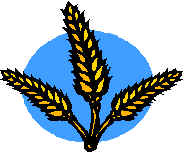
Lammas/Lughnasadh
July 31 (beginning at sundown)
Theme: First Harvest; Releasing; Skill; Accomplishments
Type: Seasonal Holiday ~ 1st Harvest Festival
Lammas celebrates the first harvesting of crops, the first of three harvest festivals. At this time the energies of the Earth begin to decline. Growth ebbs to completion; life loosens its passionate hold and prepares to yield up its fruits. The Earth is beginning the process of letting go, moving inexhorably toward darkness and Winter.
Corn and grains are of particular significance at this holiday. Traditionally, the newly harvested grain is made into bread to be shared with all in celebration. (The word ‘Lammas’ is an Old English word meaning ‘Loaf Mass’). It is traditional to fashion a corn dollie from the last stalks of grain to be harvested. It was believed that these stalks contained the ‘Spirit of the Corn’. The bundle of grain is formed in the shape of a woman, the Harvest or Corn Mother. Traditionally, the corn dollie was hung first in the barn to preside over the threshing of the grain, and then in the farmhouse until the planting of the new grain in Spring. Today, the dollie is placed on the altar for the Mabon celebration and then hung in the house or on the front door until Imbolc when it is burned to release the "Spirit of the Corn" to bring life and growth once more.
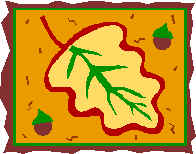
Mabon (Autumnal Equinox)
approximately Sept. 21
Theme: First day of Autumn; Harvest; Thanksgiving
Type: Equinox/Solar Holiday; balance of day & night
Mabon is the counter-point to Ostara on the Wheel of the Year. It is the first day of Autumn and the second of three harvest festivals. At Mabon, the harvest is at its fullest. This is a time for of celebrating the bounty that flows to us from the generosity of Earth and Spirit. It is traditional to reflect on the many blessings in our lives. Gather with friends and family to give thanks with feasting and celebration. Through the power of appreciation and gratitude we open our our hearts and our beings to the flow of abundance on all levels.
Mabon is also a
bittersweet time when the abundant Earth is pouring forth her harvest and yet Summer is
fading into Autumn and signs of the dying year are all around us. Night and day are once more in equilibrium, but
now light gives way to the ascendancy of darkness, and the coming of Winter. We are entering the still and introspective part
of the year. Here we are invited to take
stock of our lives and give thanks for all the experiences, both the joyful and the
challenging, which have taught and enriched us in the past year. This honoring of all facets of our lives prepares us for
Samhain when we will release those aspects of our lives which no longer serve us.
From Mabon to Ostara, we are drawn inward ... to quiet contemplation, to exploration of deep mysteries found in silence and in darkness, to laying the groundwork for future transformation and growth.
Mabon Reflection: Welcoming Autumn Samhain
(Halloween)
Samhain
(Halloween)October 31
Theme: New Year; Honoring the Ancestors; Letting Go
Type: Seasonal Holiday ~ Final Harvest Holiday
Samhain celebrates
the final harvest. With the end of the
harvest, the last yields of Summer give way to the coming Winter. Samhain reminds us that all things pass away in time. Just as the leaves fade and fall from the trees,
so we must allow for loss and passages in our lives.
This is a time to celebrate all the aspects of our lives that are dropping
away from us ... the relationships, the situations, the pain, the emotions, the old
identities that once served us ... are now passing away to make room for new growth. Samhain is an ideal time for releasing old habits
and conditions in our lives that are constricting our growth and progress. Honor the
lessons and experiences these situations have brought you, then bring these energies to a
sacred fire and bid them farewell.
For the ancient
Celts, Samhain marked the end of the old year and the start of the new. More accurately, Samhain is a space between the
years -- the old year is dead and the new year has not yet begun. It is a time out of time ... a space outside of
the natural order. As such, it is a time when
the division between dimensions or levels of reality are thinnest. This division is
referred to as “the veil between the worlds”.
Because intuition is heighted by this thinning of the veils, Samhain is an
excellent time for reading tarot cards, scrying, dreamwork, and other forms of divination.
Samhain is also known as the Feast of the Dead. At this time, ancestors and departed friends are honored. Memories and stories are shared and it is customary to set out extra places at supper for departed loved ones. Since the veil between the worlds is thinnest on this night, it is believed to be the best time for dead souls to make contact with the living. People sometimes use this time to commune with those on the other side. This should be done in a spirit of love for the highest good of all. Invite the luminous spirits of the ancestors to join you on this night, and offer prayers for the souls of departed loved ones for healing and blessings on their journey.
Samhain Reflection: Entering the Wheel Entering the Wheelby Ananaia O'Leary
As human beings living on planet Earth, we are called to dance with the rhythms of Sun & Season. The cycles of Beginning, Growth, Release repeat again ... and again ... and again in macrocosm & microcosm within and around us. We can either make a conscious choice to join this dance ~ moving in time to the Earth's pulse, or we can set ourselves swimming against the currents of Creation ~ in a vain attempt to force our way to harmony.
We are called to a partnership with Nature, not dominion over it. At the Heart of Nature is the in-born understanding of Balance ~ in the Soul of Humanity is the in-born impulse to Evolution & the expression of Free Will. How can we harmonize these 2 distinct drives? How can we build a partnership that unites Free Will & Evolution to Natural Balance?
We begin by listening ...
by tuning in ... by making a conscious choice, a conscious commitment to seek Balance
within our own Being and to align ourselves with the rhythm of Mother Earth.
Look to the turning of the Seasons as a template ... within this mandala-in-motion is the
key to the foundational rhythm of existence on this planet. By observing the cycle of the
Wheel of the Year, we can begin to understand ...
In the rhythm of Earth, each End leads to a new Beginning, and in the crystalline pause
between the exhalation & the inhalation is infinite possibility. In many indigenous
traditions the completion of the harvest marked the ending of the year. In Old Europe the
final harvest was celebrated on October 31st. (This holiday survives in our culture,
without its sacred context, as Halloween.)
This is the moment when the Old Year is dying and the New Year has not yet begun ~
the "pause between" when the limitations of mind & habit are unbound ...
when we can pierce the veils of illusion which separates us from All That Is.
Here we enter the Wheel
of the Year ... here we step into the living mandala of rhythm and cycle. As you approach
this sacred time, observe the ebb & flow of your breath ... tuning to that moment of
stillness at the end of exhalation.
Meditate upon that moment. Feel that moment in the cells of your body.
Mind-merge with that moment. Take a walk on a tree-lined street or deep in the
woods, and listen for that moment in the rustle of a falling leaf. Look skyward, and
see that moment in the wheeling wings of a southbound flock. Feel the Mother's exhalation
... Her cycle ending ... the Earth moving toward stillness. Breathe deeply ...
exhale ... and pause .......... you have begun the Dance.
